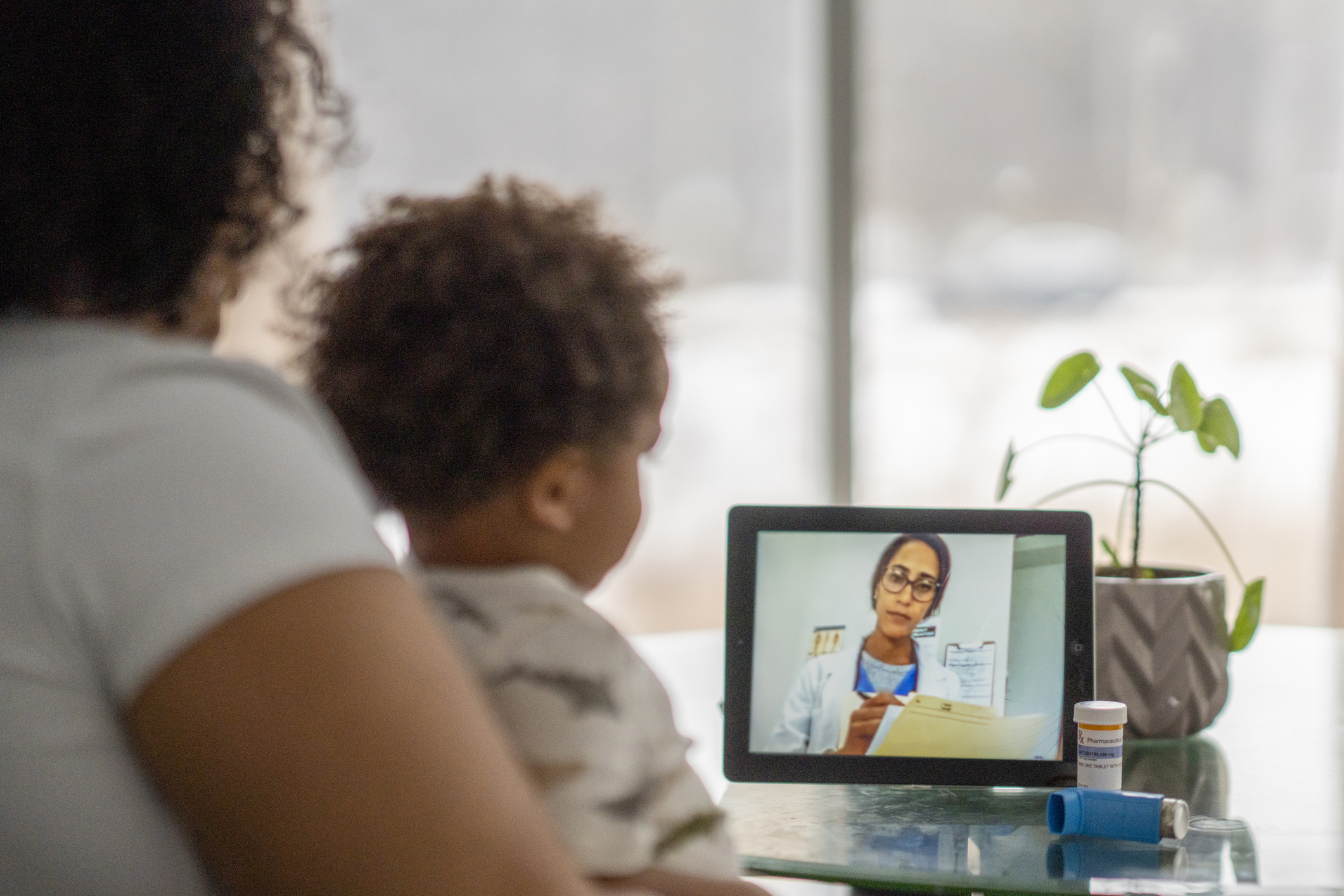Telemedicine Use in Children Aged 0–17 Years: United States, July–December 2020
Posted on by
Questions for Maria Villarroel, Health Statistician and Lead Author of “Telemedicine Use in Children Aged 0–17 Years: United States, July–December 2020.”
Q: Why did you decide to look at telemedicine among U.S. children during the pandemic?
MV: We know that telemedicine use expanded during the COVID-19 pandemic. Telemedicine became a key practice in health care that supports social distancing and decreases contact between health care staff and other patients for the receipt of health care services and reduce the spread of infection. However, there are limited estimates of telemedicine use, especially in children, and this report aims to address that gap.
Q: How did the data vary by age groups, income level and region?
MV: We examined telemedicine use in two ways: 1) telemedicine use in the past 12 months from the time of interview in July-December 2020, so this included both pre-pandemic and pandemic periods; and 2) telemedicine use because of reasons related to the coronavirus pandemic during the first year of the pandemic – 2020.
We found that telemedicine use in the past 12 months varied by age of the child and family income. Telemedicine use in the past 12 months was highest for younger children (aged 4 years and under) and older children (12 to 17 years), and lowest for children aged 5 to 11 years. Telemedicine use in the past 12 months was highest for children with family incomes below the federal poverty level and at or above 400% of the federal poverty level, and lowest for children with family incomes at 100%–199% of the federal poverty level. Although not statistically significant, a similar pattern by age was observed for telemedicine use due the pandemic, while telemedicine use due to the pandemic was highest for children with family income at or above 400% of the federal poverty level.
Telemedicine use in the past 12 months and telemedicine use because of the pandemic varied by region. Children living in the Northeast were more likely to have used telemedicine than children living in the Midwest and South regions, and similarly as likely to have used telemedicine as children living in the West region.
Q: How did telemedicine use vary between urban and rural areas?
MV: In this study, we used the NCHS Urban–Rural Classification Scheme for Counties to classify urbanization level, and we compared telemedicine use in children living in large metropolitan areas, medium and small metropolitan areas, and nonmetropolitan areas.
We found that both telemedicine use in the past 12 months and telemedicine use because of the pandemic were lower in nonmetropolitan areas compared with metropolitan areas. But we also observed that the percentage point difference between metropolitan and nonmetropolitan areas was wider for the use of telemedicine because of the pandemic than for telemedicine use in the past 12 months. For example, we observed that children residing in metropolitan areas were more than two times as likely to have use of telemedicine because of the pandemic compared with children residing nonmetropolitan areas, but children in metropolitan areas were only about 1.3 to 1.4 more likely than children in nonmetropolitan areas to have used telemedicine in the past 12 months.
Q: Do you have comparative trend data that goes further back than the second half of 2020?
MV: No. Telemedicine questions were introduced into the NHIS survey in July 2020 as one of the emerging public health topics affecting the United States related to the COVID-19 pandemic, which was declared in March 2020 by the World Health Organization.
Trend data on telemedicine use in children is limited. Since April 2020, the experimental data system called the Household Pulse Survey, which is a collaboration between multiple federal agencies, began collecting data on telemedicine use in the past 4 weeks in households with at least one child under 18 years of age, among other social and economic impacts of the COVID-19 pandemic.
Q: What is the main takeaway message here?
MV: Approximately 12.6 million children in the U.S.—corresponding to 17.5% of children aged 0–17 years—used telemedicine in the past 12 months from the time of interview in July-December 2020 (a period that included time before and during the coronavirus pandemic).
Telemedicine use in the past 12 months varied by age of the child, family income, and region of the country.
Approximately 10.2 million U.S. children—corresponding to 14.1% of children aged 0–17 years—used telemedicine in 2020 because of the pandemic.
Telemedicine use because of the pandemic varied by education of the parents living with the child and region of the country and urbanization level of residence.
Telemedicine use in the past 12 months and because of the pandemic was higher for children with current asthma, a developmental condition, and disability.
Posted on by

